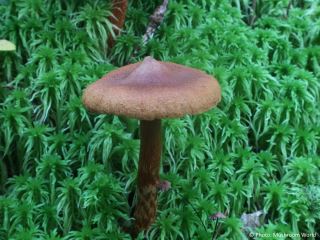Welcome to Mushroom World
Step into the fascinating world of mushrooms with Mushroom World – your go-to resource for fungi information. Our site offers clear information and beautiful images of mushrooms.
If you're curious about what fungi actually are and how they differ from plants and animals, be sure to visit our what are fungi? page for an easy-to-understand explanation.
Since there are thousands of known species of mushrooms, we have limited our database to the most common ones. New species are also continuously added to the site.
Come and explore the wonders of mushrooms with us. We hope you find our site informative, inspiring, and a valuable resource on your journey of mushroom discovery.
What you can do on Mushroom World
Browse the database
Explore mushrooms from the alphabetical list or search by name or properties.
Identify a mushroom
Know some characteristics but not the name? Use our mushroom identification helper to narrow it down.
New to identification? Start with identification basics.
Test your knowledge
Try our identification quiz and see how many mushrooms you recognise. Each run gives you new questions.
Upload your photos
Have good mushroom photos to share? Use the upload form and we will see if we can include them on the site.
Today's Mushroom
A quick highlight from our database
Today's mushroom is Cortinarius rubellus (Deadly Webcap). It grows in Europe, parts of North America and Asia.
Dimensions: Cap 3-8 cm diameter, stem 5-11 cm tall * 0.8-1.5 cm diameter
Description:
Cortinarius rubellus, commonly known as the Deadly Webcap, is a little to middle-sized mushroom that smells of radishes and is tawny-brown to reddish-orange with a pointed, umbonate cap covered with fibrils. The mushroom is mycorrhizal with conifer trees - pine and spruce in particular. It grows on damp acid soil, often fruiting in small groups.
Cap conical to convex (partly flattening at maturity but retaining a slight or sometimes pronounced umbo). In colour, it is a tawny to date brown with paler margins and often covered in fine, fibrous scales. The margin is often slightly rolled down even in fully mature specimens. Gills initially covered by a cobweb-like veil called cortina in young specimens, start as pale yellowish and turn rusty brown as the spores mature. They have an adnate or sometimes adnexed connection to the stipe. Stem often slightly bowed rather than straight, somewhat paler than the cap and usually retains fibres from the cortina, mottled with red. The flesh is cream or pale yellow, but more tan below the pileipellis and in the stem base. Spore print rusty reddish-brown.
Microscopic Features: The spores are ellipsoidal to sub-globose in shape, measuring approximately 9-12 µm in length and 6.5-8.5 µm in width. They have a rough surface.
Cortinarius rubellus on the www.first-nature.com web site.
If you are interested in this mushroom, look it up in our database for more detailed photographs and additional information.


Many mushrooms are poisonous, and some can be lethally toxic. Distinguishing between edible and poisonous mushrooms can be very challenging. Therefore, we strongly advise against consuming wild mushrooms. This website does not contain any information about the edibility or toxicity of mushrooms.
Although efforts have been made to ensure accuracy on this website, the information may contain errors and omissions. Therefore, all content provided is for educational and informational purposes only and should not be relied upon or used as a basis for consuming any plants or mushrooms.
External links are provided for reference only. We do not endorse or take responsibility for the content, advice, or products found on these sites or in any advertisements shown on this website.